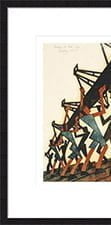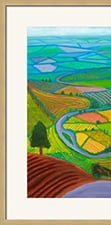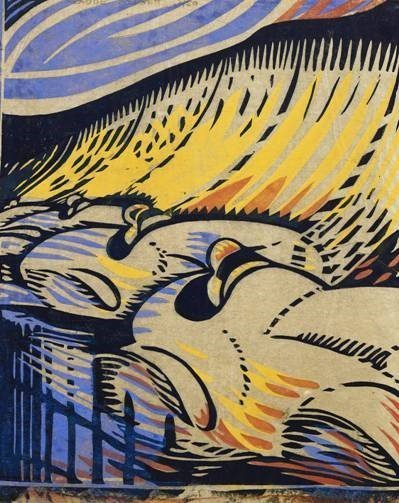Claude Flight (1881–1955) was a pivotal figure in British modernism, best known for championing the linocut technique and for his role in the Grosvenor School of Modern Art. His prints are instantly recognisable for their bold, rhythmic forms and dynamic depictions of modern life—from speeding buses to bustling crowds—often influenced by Futurism, Cubism, and Vorticism.
Flight believed deeply in the democratic potential of linocuts: the medium was affordable, accessible, and ideal for capturing the energy of the machine age. He taught at the Grosvenor School from 1926, mentoring artists like Sybil Andrews, Cyril Power, and Lill Tschudi, who would go on to define the movement.
His works—such as Speed (1922), Swing Boats (1924), and The Paris Omnibus (1923)—are celebrated for their vibrant colour, simplified forms, and sense of motion. He also co-ran an interior design business with fellow artist Edith Lawrence, with whom he shared both a personal and professional life.
Flight exhibited widely, including at the Royal Academy, the Redfern Gallery, and internationally in Paris and the U.S. His legacy is preserved in major collections like the British Museum, V&A, and the Museum of Modern Art, New York
£138.00
£138.00




